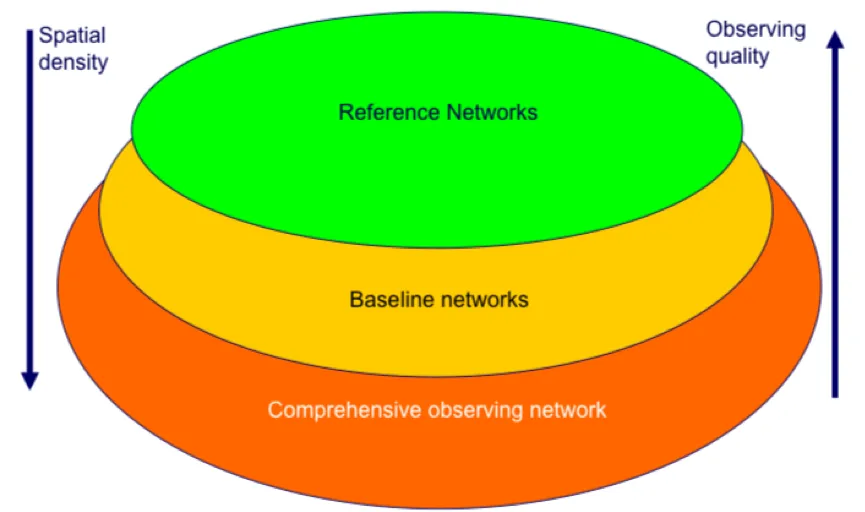Making better sense of the mosaic of environmental measurement networks: a system-of-systems approach and quantitative assessment
The final revised version of the paper summarizing GAIA-CLIM’s maturity assessment approach has been published.
This workpackage is concerned with the assessment and mapping of non-satellite measurement capabilities and the assessment of geographical gaps. Recognising that there is a continuum of measurement capabilities of Essential Climate Variables(ECVs) across the multiple networks that constitute our global observational system, the workpackage shall:

Figure: Posited system of systems approach to observing system maturity arising from Task 1.1.
The final revised version of the paper summarizing GAIA-CLIM’s maturity assessment approach has been published.
Limited availability of traceable uncertainty estimates limits the direct applicability of the majority of existing data to high-quality applications, such as satellite-data characterisation, model validation, and reanalysis. While a vast amount of data are available, the uncertainty of these data is - in a metrological sense - often only insufficiently specified, estimated, or even unknown.
The need for extensive and accurate metadata is ever increasing in both research and operations, enabling large-scale, distributed management of resources. Recent years have seen a growth in interaction between previously relatively isolated communities, driven by a need for cross-domain collaboration and exchange of data and products. However, metadata standards have generally not been able to meet the needs of interoperability between independent standardization communities.
The availability of user tools able to jointly visualize the current satellite and non-satellite observing capabilities for measuring ECVs at the global scale has never been provided in the past.
There currently exists no universally recognised approach for assessing quantifiable aspects of the measurement system maturity of existing observing networks. Although absolute measurement quality cannot be assured, fundamental properties of the measurement system that build confidence in its appropriateness and metrological verity can be assessed. The lack of an agreed international framework for such an assessment leads to heterogeneity in the approaches used to select the most suitable measurement series for any given application.
This discussion paper, summarizing the maturity assessment approach, is under review here at the journal Geoscientific Instrumentation, Methods and Data Systems (GI). Constructive critical reviews are highly welcome.
We have now published our Maturity Matrix Assessments (MMA).
While a comprehensive review of space-based missions and needs has been put together within official documents of the international community and coordinated by an agreed international framework in the Committee on Earth Observation Satellites (CEOS), in contrast, the mapping and coordination of current non-satellite observing capabilities is piecemeal and poorly documented.